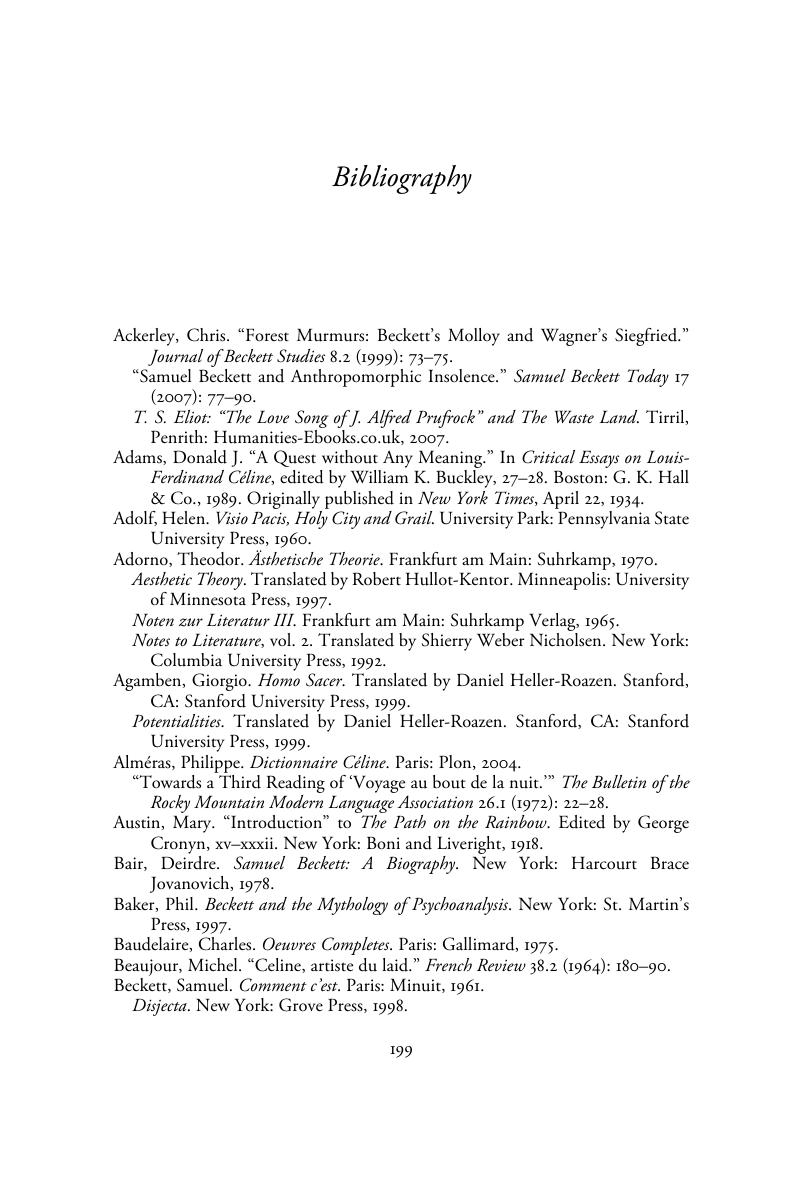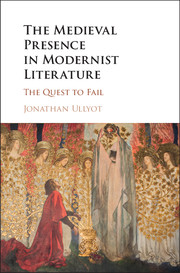Book contents
- The Medieval Presence in Modernist Literature
- The Medieval Presence in Modernist Literature
- Copyright page
- Contents
- Book part
- Introduction Failure aesthetics and the modernist quest narrative
- Chapter 1 The Golden Bowland the Holy Grail
- Chapter 2 Jessie Weston and the Mythical Method ofThe Waste Land
- Chapter 3 Kafka’s Grail Castle
- Chapter 4 Céline’s Knight of the Apocalypse
- Chapter 5 MolloyorLe Conte du Graal
- Conclusion Reading Failure
- Notes
- Bibliography
- Index
- References
Bibliography
Published online by Cambridge University Press: 05 November 2015
- The Medieval Presence in Modernist Literature
- The Medieval Presence in Modernist Literature
- Copyright page
- Contents
- Book part
- Introduction Failure aesthetics and the modernist quest narrative
- Chapter 1 The Golden Bowland the Holy Grail
- Chapter 2 Jessie Weston and the Mythical Method ofThe Waste Land
- Chapter 3 Kafka’s Grail Castle
- Chapter 4 Céline’s Knight of the Apocalypse
- Chapter 5 MolloyorLe Conte du Graal
- Conclusion Reading Failure
- Notes
- Bibliography
- Index
- References
Summary

- Type
- Chapter
- Information
- The Medieval Presence in Modernist LiteratureThe Quest to Fail, pp. 199 - 210Publisher: Cambridge University PressPrint publication year: 2015



